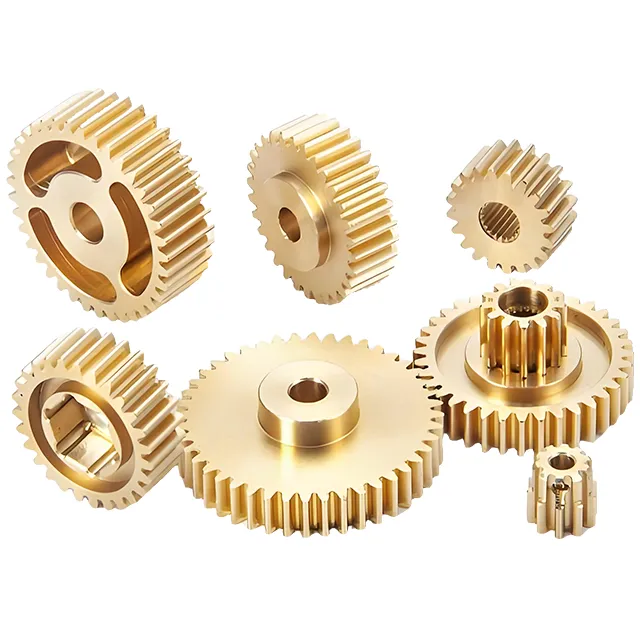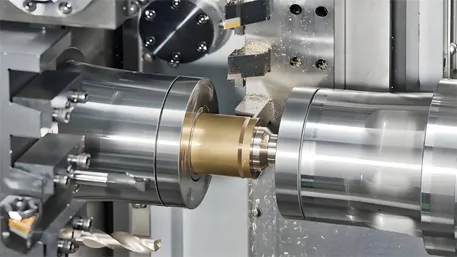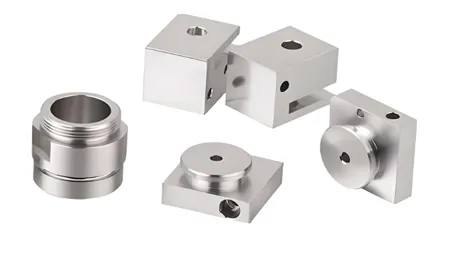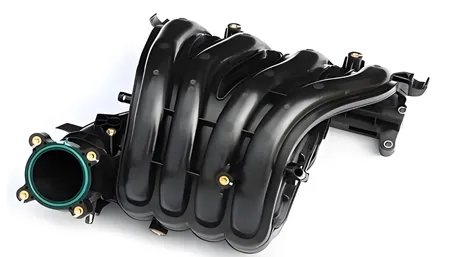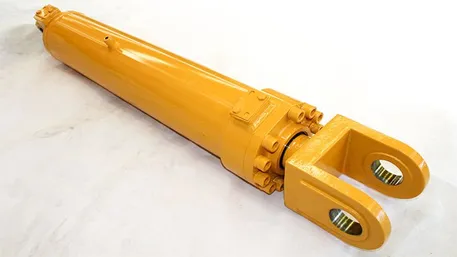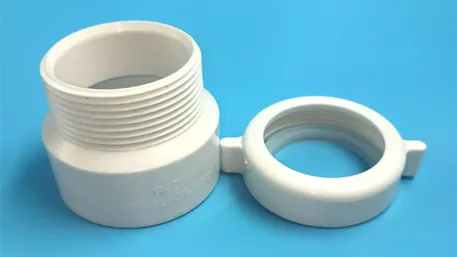In the field of motorsport, the precision, lightweight design, and reliability of parts directly determine the speed, handling, and safety of the vehicle. As racing technology breaks through towards extreme performance, CNC (Computer Numerical Control) processing technology, with its excellent precision manufacturing capabilities and material adaptability, has become the core technical support for customizing racing car parts. This article will systematically analyze the technical logic and engineering value of customized CNC racing car parts from dimensions such as technical advantages, materials engineering, processing technology, quality control, and industry applications.
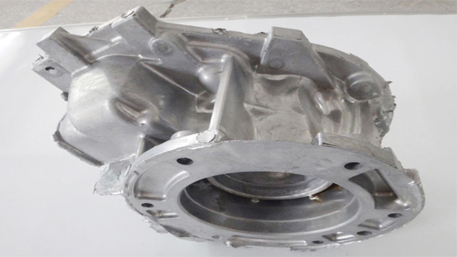
I. Core Advantages of CNC Technology in Customizing Racing Car Parts
CNC technology provides three core supports for the processing of racing car parts through digital control and multi – axis linkage capabilities:
Sub – micron – level Precision Assurance
The positioning accuracy of CNC machine tools can reach ±0.005mm, the repeat positioning accuracy is ±0.01mm, and the surface roughness Ra≤0.4μm. For example, when processing a racing car engine piston, the ellipticity error of the skirt can be controlled within ±0.002mm, ensuring a precise fit with the cylinder block, reducing energy loss, and improving engine efficiency.
Full – dimensional Machining Ability for Complex Structures
Five – axis CNC equipment can achieve the machining of spatial curved surfaces, thin – wall structures (wall thickness ≤ 0.3mm), and micro – features that are difficult to complete with traditional processes. For example, the aluminum alloy control arms of a racing car’s suspension system can be formed in one – step through five – axis milling with complex weight – reducing holes and curved surfaces, reducing weight by 40% while maintaining strength.
High Compatibility of Materials and Processes
CNC technology is compatible with high – performance materials such as aluminum alloys (7075, 6061), titanium alloys (TC4), carbon fiber composites, and superalloys (Inconel 718). For different material characteristics, cutting parameters can be optimized: when processing 7075 aluminum alloy, high – speed cutting (HSC) technology is adopted, with a rotation speed of 15000r/min and a feed rate of 2000mm/min, increasing the efficiency by 40%; when processing titanium alloy, high – pressure internal – cooling tools are applied, extending the tool life by 3 times.
II. Materials Engineering and Selection Strategies for Customizing Racing Car Parts
Material selection is a crucial link in customizing racing car parts and needs to be combined with track conditions and performance requirements:
Balance of Lightweight and High Strength
Aluminum alloy (7075 – T6) has a density of 2.7g/cm³ and a tensile strength of ≥572MPa. It is widely used in components such as frames and wheels, reducing weight by 40% while ensuring structural strength.
Titanium alloy (TC4) has a tensile strength of ≥895MPa, reduces weight by 50%, and doubles the fatigue resistance. It is suitable for high – load components such as suspension systems and fasteners.
High – Temperature Resistance and Wear – Resistance Design
Superalloy (Inconel 718) can serve for a long time at 650℃ and is used in racing car engine turbine components to ensure stability in high – temperature environments.
20CrMnTi alloy steel, after carburizing and quenching treatment, has a surface hardness of HRC58 – 62 and its wear resistance is increased by 5 times. It is suitable for components such as transmission gears and drive shafts.
Special Function Requirements
Carbon fiber composite material (CFRP) has a density of 1.6g/cm³ and its strength is 3 times higher than that of aluminum alloy. It is used in racing car body kits, reducing weight by 60% and improving aerodynamic performance.
Copper alloy (H62) has excellent electrical conductivity and is used for connectors in the racing car’s electronic system to ensure stable signal transmission.
III. Innovation and Optimization of CNC Processing Technology
In response to the extreme requirements of racing car parts, CNC processing technology achieves a double breakthrough in efficiency and quality through the following technological innovations:
Multi – axis Linkage Composite Machining
Through five – axis linkage, complex curved surfaces can be machined in one clamping. For example, for the combustion chamber surface of a racing car engine cylinder head, the processing efficiency is increased by 70%, and the position accuracy reaches ±0.01mm, avoiding errors caused by multiple clampings.
High – Speed Cutting (HSC) Technology
When processing aluminum alloy wheels, the rotation speed can reach 20000r/min, the feed rate is 4000mm/min, the material removal rate is increased by 60%, and at the same time, cutting thermal deformation is reduced to ensure the dimensional stability of thin – wall wheels (wall thickness 1.2mm).
Enhancement of Surface Treatment Processes
Hard anodizing is carried out on aluminum alloy parts, with a film thickness of 25 – 50μm and a hardness of HV300 – 500. The wear resistance is increased by 3 times, which is suitable for brake calipers and suspension components.
Surface polishing is carried out on titanium alloy fasteners, with a surface roughness Ra≤0.2μm, reducing air resistance and improving corrosion resistance.
IV. Quality Control System for Customizing Racing Car Parts
To ensure that products meet the strict standards of motorsport, customized CNC racing car parts need to go through a strict quality control process:
Dimension and Geometric Tolerance Detection
A coordinate measuring machine (CMM) is used for full – size scanning, and the tolerance of key dimensions (such as piston diameter) is controlled within ±0.003mm.
Geometric tolerance detection: The roundness error is ≤0.002mm, and the coaxiality is ≤0.005mm to ensure the assembly accuracy of parts.
Materials and Mechanical Property Verification
Spectral analysis is used to confirm the material composition. For example, the zinc content of 7075 aluminum alloy needs to be ≥5.1 – 6.1%.
Tensile tests, fatigue tests, and hardness tests are carried out to ensure that the mechanical properties meet ASTM standards. For example, the yield strength of TC4 titanium alloy is ≥825MPa.
Functional and Reliability Testing
Dynamic balance testing is carried out on wheels, with an unbalance amount of ≤5g to ensure high – speed driving stability.
Fatigue life testing is carried out on suspension components, with 1 million cycles without cracks to ensure reliability under extreme track conditions.
V. Industry Application Practices
Engine and Transmission Systems
Customized 7075 aluminum alloy pistons, after five – axis CNC milling, have an ellipticity error of the skirt ≤0.002mm. They fit tightly with the cylinder block, increasing the engine power by 5%.
20CrMnTi alloy steel transmission gears, after CNC hobbing, have a tooth profile accuracy of ISO 5, increasing the transmission efficiency by 15% and extending the service life by 3 times.
Suspension and Braking Systems
TC4 titanium alloy suspension control arms reduce weight by 40% and have a tensile strength of ≥895MPa, improving the vehicle’s cornering stability.
Aluminum alloy brake calipers, after CNC milling and hard anodizing, have improved wear resistance and a 10% faster braking response.
Body and Aerodynamic Kits
The carbon fiber composite front spoiler, after CNC hot – pressing, has a dimensional tolerance of ±0.05mm. The air resistance coefficient is reduced by 12%, increasing the high – speed downforce.
7075 aluminum alloy wheels, after CNC milling and surface polishing, reduce weight by 30% and have a 20% improvement in heat dissipation performance, extending the tire life.
VI. Frequently Asked Questions (FAQ)
What level of precision can customized CNC racing car parts achieve?
CNC processing can achieve a dimensional tolerance of ±0.005mm, a repeat positioning accuracy of ±0.01mm, and a surface roughness Ra≤0.4μm, meeting the requirements of high – precision components such as engine pistons and turbine blades.
How to choose suitable racing car materials?
It is necessary to choose according to the functions and working conditions of components. For example, aluminum alloy or carbon fiber is selected for lightweight, titanium alloy is selected for high – load components, and superalloy is selected for high – temperature components.
How long is the production cycle for customizing racing car parts?
The production cycle depends on the complexity of the parts and the materials. Simple parts usually take 7 – 10 days, and complex parts may take 15 – 30 days. Urgent customization is supported to meet racing event requirements.
Can CNC processing improve the aerodynamic performance of racing cars?
Yes, CNC technology can precisely machine the complex curved surfaces of aerodynamic kits such as spoilers and diffusers, optimizing the air flow path, reducing wind resistance, or increasing downforce.
Is the cost of customizing racing car parts high?
Racing car parts have a relatively high cost due to their special materials and high – precision requirements. However, CNC technology can significantly reduce the unit cost by optimizing processes and reducing waste. Moreover, high – performance parts can improve racing results, resulting in a high long – term return on investment.
Consult Now and Get a Tailored Solution!
Whether it is engine components for pursuing extreme speed, suspension systems for enhancing handling, or body kits for optimizing aerodynamics, our professional team will rely on the high – precision advantages of CNC technology, combined with racing car materials engineering and process innovation, to provide you with a full – process customization service from design, processing to inspection. Click to leave a message, and let us use a rigorous technical system and innovative engineering concept to customize high – performance and lightweight CNC part solutions for your racing car, helping you break through limits and fulfill your championship dreams on the track!

